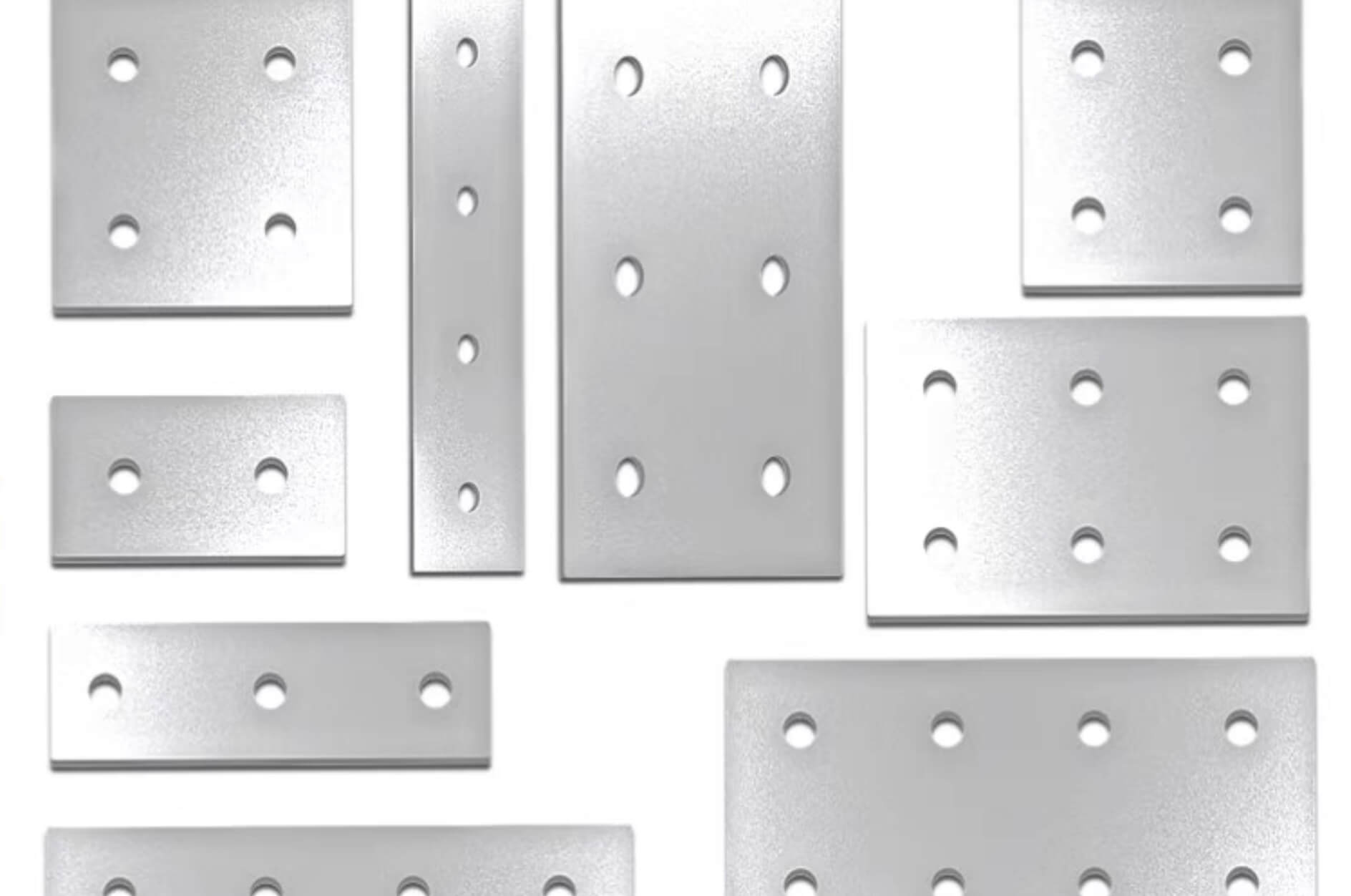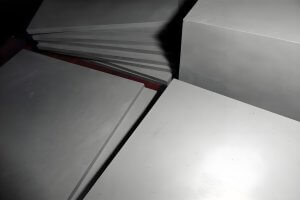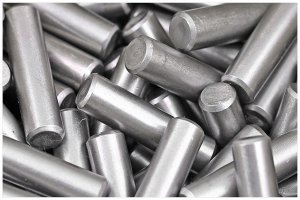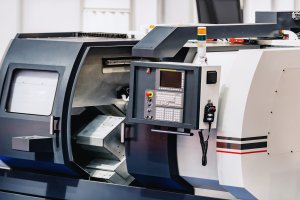Choosing the right material for CNC machining is a crucial decision for any manufacturer or engineer. Two of the most commonly used materials in various industries are carbon steel and stainless steel. Both offer distinct advantages depending on the application, but they differ significantly in properties, machining requirements, and cost. Custom Machining processes allow for precise adaptation of both carbon steel and stainless steel to meet specific requirements, ensuring high-quality outcomes. This comprehensive guide focuses on comparing carbon steel vs stainless steel in the context of CNC machining, helping you determine which material is best suited for your specific needs.CNC machined parts made from either material can achieve excellent strength and durability, but the choice depends on the specific demands of your project.
Carbon Steel vs Stainless Steel: Material Properties and Benefits
Before diving into machining processes, it’s essential to understand the key properties of carbon steel and stainless steel, as these will affect the performance and outcome of CNC machining. Both materials are iron-based alloys but differ significantly in composition and behavior.
Carbon Steel
- Composition: Carbon steel primarily consists of iron and carbon, with varying levels of other elements like manganese and silicon.
- Strength and Hardness: Carbon steel is known for its high strength and hardness, making it suitable for applications requiring durability.
- Cost: Generally, carbon steel is more affordable than stainless steel, making it a popular choice for cost-sensitive projects.
- Corrosion Resistance: This is where carbon steel falls short. Without protective coatings or treatments, carbon steel is prone to rust when exposed to moisture.
Stainless Steel
- Composition: Stainless steel contains a higher chromium content (at least 10.5%), which forms a passive layer of chromium oxide, protecting it from corrosion.
- Corrosion Resistance: One of the standout features of stainless steel is its excellent resistance to corrosion, making it ideal for applications in harsh environments.
- Strength and Hardness: While stainless steel also offers good strength, it may not always be as hard as some high-carbon steel variants. However, its corrosion resistance gives it an advantage in many applications.
- Cost: Stainless steel is generally more expensive than carbon steel due to its enhanced properties.
Table: Key Material Properties Comparison
| Property | Carbon Steel | Stainless Steel |
|---|---|---|
| Strength | High | High |
| Hardness | Varies with carbon content | Moderate to High |
| Corrosion Resistance | Low, requires treatment | Excellent |
| Cost | Lower | Higher |
| Machinability | Good, but depends on grade | Generally harder to machine |
CNC Machining Carbon Steel vs Stainless Steel: What You Need to Know
Now that we’ve covered the material properties, let’s explore how carbon steel and stainless steel behave during CNC machining. The machinability of these metals directly affects production time, tool wear, and overall cost.
CNC Machining Carbon Steel
- Ease of Machining: Carbon steel, especially low and medium carbon steel, is generally easier to machine compared to stainless steel. It responds well to cutting, drilling, and milling processes.
- Tool Wear: Carbon steel can be rough on cutting tools, especially when dealing with high-carbon variants, but it doesn’t pose the same challenges as stainless steel.
- Cooling and Lubrication: While carbon steel doesn’t generate as much heat during machining as stainless steel, using appropriate cooling methods still ensures precision and extends tool life.
CNC Machining Stainless Steel
- Machinability: Stainless steel, due to its hardness and resistance to heat, is more challenging to machine. The work-hardening property of some stainless steels can make machining more difficult as cutting progresses.
- Tool Wear: Machining stainless steel causes significant wear on cutting tools due to its hardness and toughness. This requires the use of high-quality carbide or coated tools.
- Cooling and Lubrication: Adequate cooling and lubrication are critical when machining stainless steel to prevent overheating and maintain surface quality. Cutting fluids are essential to reduce friction and avoid work-hardening.
Table: CNC Machining Characteristics
| Characteristic | Carbon Steel | Stainless Steel |
|---|---|---|
| Machinability | Easier to machine | More challenging |
| Tool Wear | Moderate | High |
| Cooling Requirements | Moderate | High |
| Surface Finish | Good | Good, but requires more care |
| Cutting Tool Material | High-Speed Steel (HSS) | Carbide or coated tools |
Applications of Carbon Steel and Stainless Steel in CNC Machining
Understanding where these materials excel can help you make an informed decision. Carbon steel and stainless steel are used in various industries, but they serve different purposes based on their unique characteristics.
Carbon Steel Applications
- Automotive Industry: Carbon steel is commonly used for parts like gears, shafts, and bearings due to its high strength and affordability.
- Construction: The structural integrity of carbon steel makes it suitable for beams, reinforcing bars, and other construction components.
- Heavy Equipment: Parts that need to withstand high mechanical stress, such as machine parts and industrial tools, often use carbon steel.
Stainless Steel Applications
- Medical Devices: Stainless steel’s corrosion resistance and sterilization properties make it ideal for surgical tools and medical implants.
- Food and Beverage Industry: Equipment like tanks, pipes, and containers made of stainless steel are used in environments where hygiene and corrosion resistance are paramount.
- Marine and Aerospace: Stainless steel is often used in harsh environments, including marine applications and aerospace, where exposure to corrosive elements is frequent.
Table: Industry-Specific Applications
| Industry | Carbon Steel Applications | Stainless Steel Applications |
|---|---|---|
| Automotive | Gears, shafts, bearings | Exhaust systems, decorative trims |
| Medical | Basic tools, frames | Surgical instruments, implants |
| Construction | Beams, reinforcing bars | Handrails, structural panels |
| Food & Beverage | Basic components | Tanks, containers, fittings |
| Aerospace/Marine | Structural parts | Corrosion-resistant components |
CNC Machining Tips for Carbon Steel and Stainless Steel
When working with carbon steel or stainless steel in CNC machining, understanding how to optimize your process is key. Here are some tips for getting the best results from each material.
Tips for Machining Carbon Steel:
- Choose the Right Grade: Low and medium carbon steel grades are much easier to machine than high-carbon steel, which can cause excessive tool wear.
- Use Sharp Tools: Sharp cutting tools minimize friction and ensure a smooth finish. High-speed steel (HSS) tools are often sufficient, but carbide tools may be needed for harder carbon steel grades.
- Monitor Tool Wear: Carbon steel can dull tools quickly, so regular monitoring of tool wear will help maintain precision and surface quality.
Tips for Machining Stainless Steel:
- Invest in High-Quality Tools: Stainless steel requires durable cutting tools like carbide or coated tools due to its hardness.
- Slow and Steady: Slower cutting speeds and careful feed rates prevent work-hardening and overheating, which can compromise the material’s integrity.
- Use Plenty of Coolant: Adequate cooling is essential when machining stainless steel. It helps reduce heat buildup and ensures a cleaner cut.
Table: CNC Machining Tips
| Material | Key Machining Tips |
|---|---|
| Carbon Steel | Use sharp tools, monitor tool wear, choose correct grade |
| Stainless Steel | Slow cutting speeds, high-quality tools, use cooling |
Cost Considerations for Carbon Steel vs Stainless Steel in CNC Machining
Cost is always a significant factor when selecting materials for CNC machining. Understanding the price differences and associated costs can help you choose the material that balances both performance and budget.
Carbon Steel Costs:
- Material Cost: Carbon steel is generally more affordable, especially in low and medium grades.
- Machining Costs: Due to its easier machinability, carbon steel often has lower machining costs compared to stainless steel.
- Maintenance: Carbon steel requires regular maintenance (e.g., coating or painting) to prevent corrosion, which can add to long-term costs.
Stainless Steel Costs:
- Material Cost: Stainless steel is more expensive due to its enhanced corrosion resistance and other properties.
- Machining Costs: Machining stainless steel can be more costly due to tool wear and the need for high-end cutting tools and slower machining speeds.
- Maintenance: Despite its higher initial cost, stainless steel requires less maintenance, making it more cost-effective in applications where corrosion is a concern.
Table: Cost Comparison
| Cost Factor | Carbon Steel | Stainless Steel |
|---|---|---|
| Material Cost | Lower | Higher |
| Machining Cost | Lower | Higher |
| Maintenance Cost | Higher (due to corrosion) | Lower |
Choosing the Right Material for Your CNC Machined Parts
The decision between carbon steel and stainless steel ultimately depends on your application requirements, budget, and environmental factors. Here’s a quick guide to help you make the right choice:
When to Choose Carbon Steel:
- You need a strong, durable material but don’t require high corrosion resistance.
- Your project is budget-sensitive, and material costs are a concern.
- You’re working in applications like construction or automotive, where mechanical strength is more important than corrosion resistance
When to Choose Stainless Steel:
- Corrosion resistance is critical, especially in environments exposed to moisture, chemicals, or high temperatures.
- You’re producing parts for industries like medical, food and beverage, or marine, where hygiene and resistance to rust are essential.
- You’re willing to invest in higher material and machining costs for long-term durability.
Table: Material Selection Criteria
| Criteria | Best Choice |
|---|---|
| Corrosion Resistance | Stainless Steel |
| Budget Constraints | Carbon Steel |
| Strength | Both are suitable, depending on the specific grade |
| Machinability | Carbon Steel |
| Maintenance Requirements | Stainless Steel |
Conclusion
Both carbon steel and stainless steel have their own sets of advantages and drawbacks, especially when it comes to CNC machining. Carbon steel offers affordability and strength, while stainless steel provides superior corrosion resistance and longevity. Understanding the differences between these materials and how they perform in CNC machining can help you make the best choice for your specific project. Whether you’re focused on cost, performance, or environmental factors, selecting the right material is the key to achieving the best results in your CNC machined parts.
FAQ
- Which is easier to machine, carbon steel or stainless steel?
Carbon steel is generally easier to machine than stainless steel, especially the low and medium carbon grades. - Is stainless steel worth the higher cost?
Yes, if your application requires high corrosion resistance and longevity. Stainless steel’s durability can justify its higher cost in the long run. - Can CNC machining achieve tight tolerances with both materials?
Yes, CNC machining can achieve precise tolerances with both carbon steel and stainless steel, but cutting speeds and tooling need to be optimized for each material. - Which material is better for outdoor applications?
Stainless steel is the better choice for outdoor applications due to its superior corrosion resistance. - What type of cutting tools should I use for carbon steel and stainless steel?
For carbon steel, high-speed steel (HSS) tools are often sufficient, while stainless steel requires carbide or coated tools due to its hardness.
Other Articles You Might Enjoy
- What Material Properties Need to Be Considered When CNC Machining Stainless Steel Flanges?
The CNC machining of stainless steel flanges requires a profound understanding of the material's properties to ensure high-quality, precision outcomes. This article delves into the critical material properties that impact…
- Fast CNC Machining Services for Stainless Steel Prototyping
CNC Machining and Stainless Steel in Prototyping Computer Numerical Control (CNC) machining is a critical process in the manufacturing sector, particularly for prototyping projects. It's an automated method that uses…
- The Essential Guide to Selecting the Right Metal for CNC Machining: Stainless Steel vs. Carbon Steel
Introduction to CNC Machining and Metals In the realm of creation and manufacturing, Computerized Numerical Control (CNC) machining serves as a critical tool. It is an advanced system involving the…
- How to Choose a Global CNC Machining Service Provider for Stainless Steel Flanges?
Choosing the right CNC machining service provider for stainless steel flanges is crucial to ensure high-quality products, timely delivery, and cost-effectiveness. This guide will help you understand the key factors…
- How Does CNC Machining Achieve Precision Tolerances in Stainless Steel Parts?
The Importance of Precision Tolerances in Stainless Steel Parts Precision tolerances are the allowable limits of variation in a physical dimension. In CNC machining, particularly for stainless steel parts, achieving…
- Precision CNC Machining of Stainless Steel: Innovations and Best Practices in Aerospace Machining
Introduction: Precision CNC Machining and the Use of Stainless Steel Precision Computer Numerical Control (CNC) machining, a vital technology within the manufacturing industry, uses pre-programmed software to guide machinery towards…






